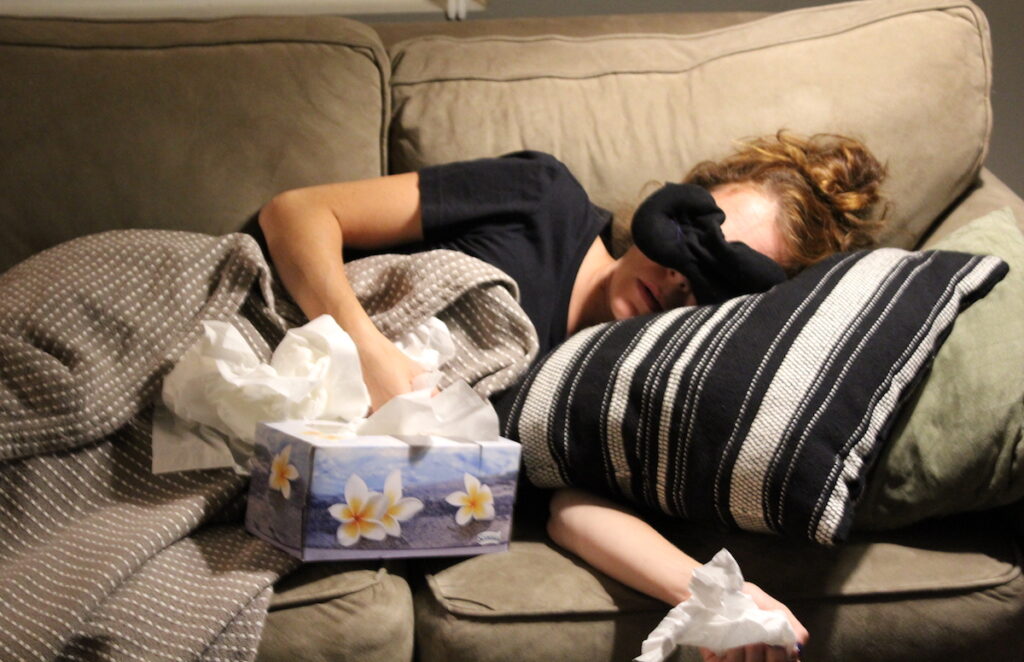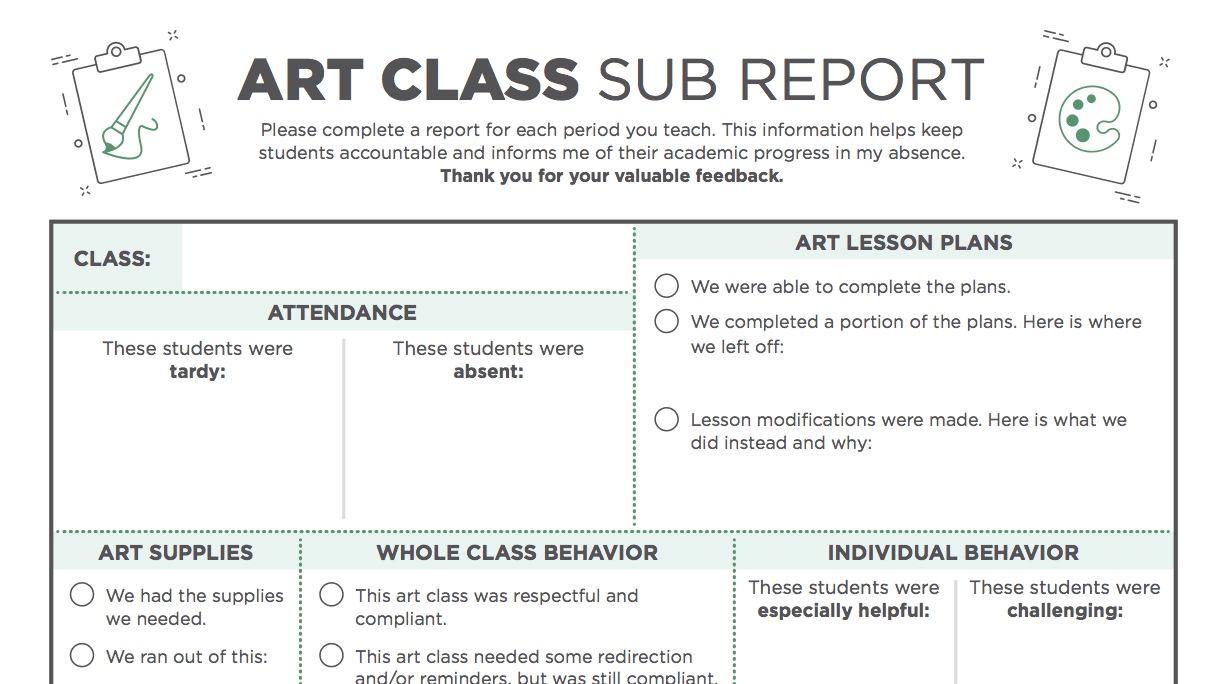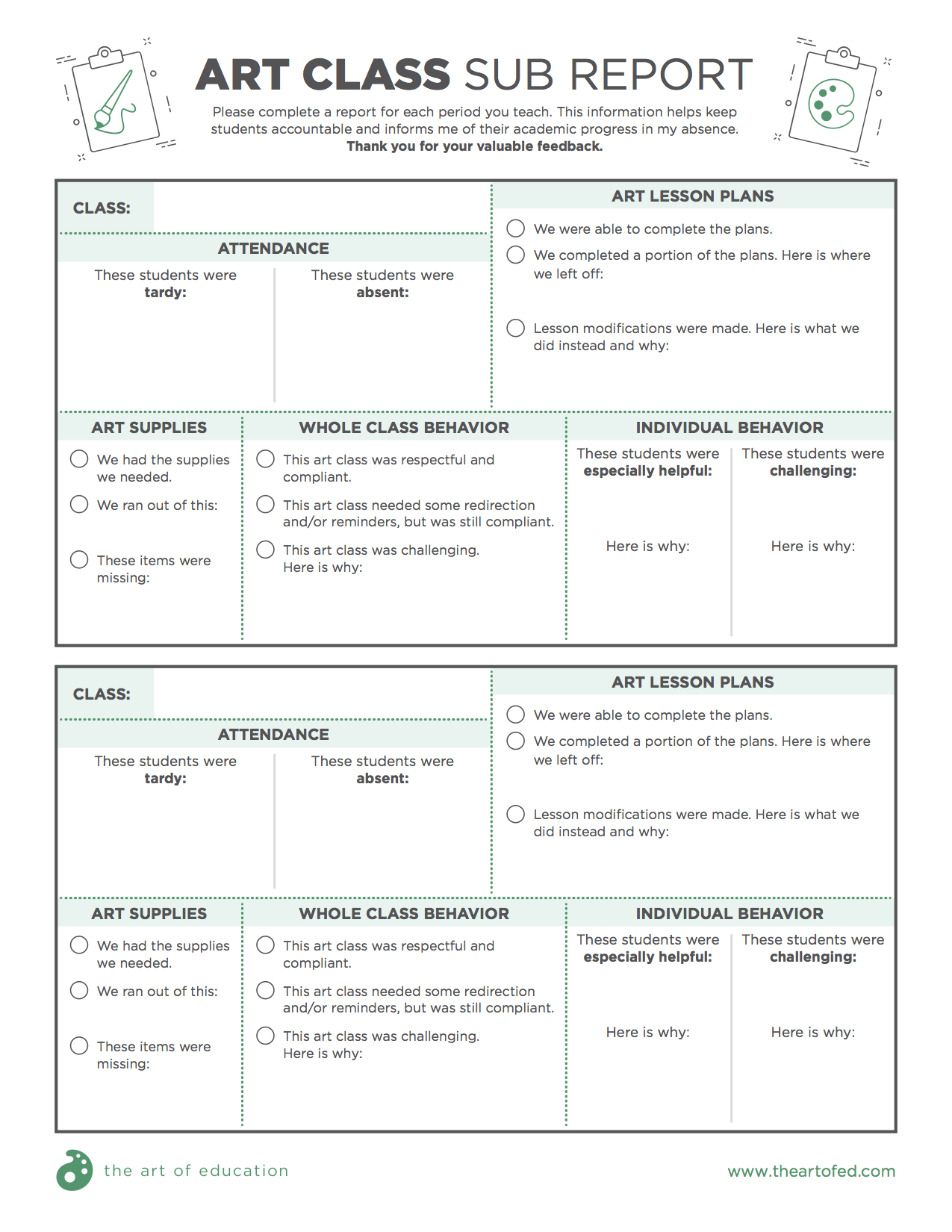We’re all familiar with the following stressful scenario.
You wake up on a school morning to find yourself so ill that you are practically incapacitated. You spend several minutes fighting an internal struggle. Write substitute lesson plans or go to work feeling like death warmed over? Finally, common sense prevails, and you submit a sub request. You spend a painful hour thoughtfully and painstakingly typing out exactly what your students should do in your absence.

The next day, you return to find a vague note from your sub, or worse, no note at all! This lack of information makes it tough to decipher exactly what went on when you were gone, and nearly impossible to plan for the next class.
If this sounds familiar, I have a solution for you: a substitute teacher feedback form.
Having your subs fill out a short form for each class they teach allows you to easily plan for the next time you see your students, whether it’s the day you return or sometime the following week.
Luckily, we’ve made one for you. The form is easy for subs to use and provides you with the essential information you’ll need upon your return. Simply print and make copies to store in your sub folder. It’s the easiest way to find out what happened while you were out!
Here’s a quick rundown of what’s included on the form and why.
Who Was Absent and Who Was Tardy
Besides you, who was gone that day? Whether you are giving participation points or searching for a missing assignment, it is vital to you ascertain who was actually in class.
Whole Class Behavior
We all want our students to be well-behaved and respectful while we are out. But, unfortunately, we know this doesn’t always happen. The best way to advocate for your substitute is to hold students accountable for their behavior while you are gone.
Ask your sub to reflect on the class’s behavior as a whole and provide feedback about the general tone of the class. If you get a poor report, make sure and ask for clarifying details to be sure that their perception is consistent with your classroom expectations. For example, a sub may have a vastly different idea of what constitutes “an acceptable noise level” during work time than you do.
Individual Behavior
Just like the behavior of the class as a whole, it’s important to hold individual students accountable. If your substitute identifies a student as a problem, this warrants an individual conversation with you. After your chat, you can determine if you need to enact whatever consequence has been predetermined by your classroom management system.
On the flip-side, if a sub left a positive note about a specific student, make sure you quietly reward them with a special privilege in your art room, or even a quick, personal thank you note.
Lesson Plan Update
Often, we adapt our lessons to accommodate an adult who may not have an art background. Or, the substitutes sometimes create their own adaptations, as a method of survival. Either way, it is essential to know what was actually accomplished, to inform your planning for subsequent instruction.
Art Supply Update
Nothing is worse than finding out you are completely out of an essential supply, mid-class period. If a substitute ran out of an item, you will want to know before your next session! Ask your substitute to identify any materials that may need to be restocked.
Being sick as an art teacher is the WORST! Although many substitutes enjoy our students and our classroom setting, our content sometimes makes it difficult to find substitutes who are willing to step into our shoes. Make their job (and yours!) just a little bit easier by using this simple download. By checking a few boxes and writing a simple explanation or two, your sub can effectively communicate everything you need to know to get back on track quickly after an absence.
What strategies do you have for making the day easier for your substitute?
What is your favorite sub plan or sub activity?
Magazine articles and podcasts are opinions of professional education contributors and do not necessarily represent the position of the Art of Education University (AOEU) or its academic offerings. Contributors use terms in the way they are most often talked about in the scope of their educational experiences.






